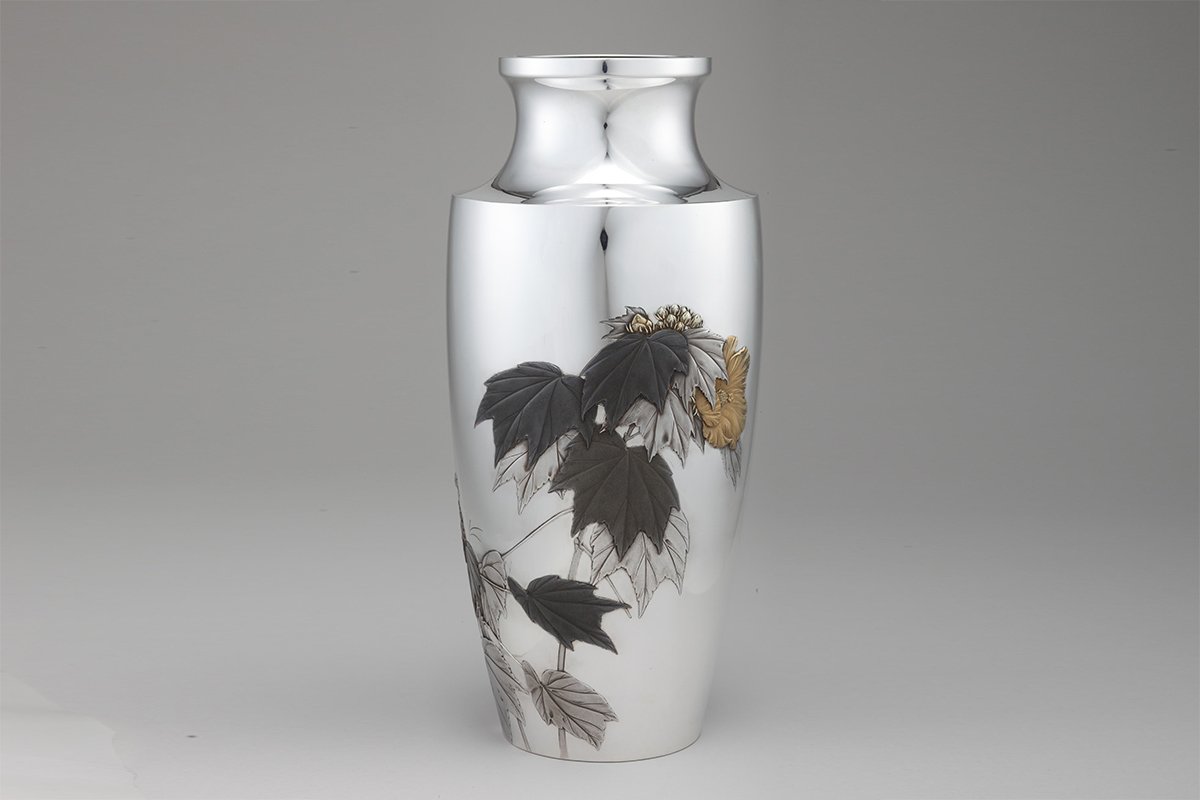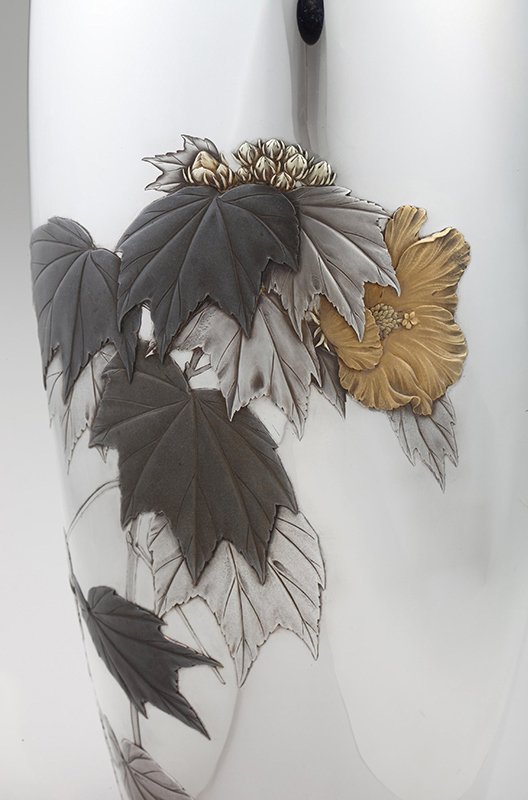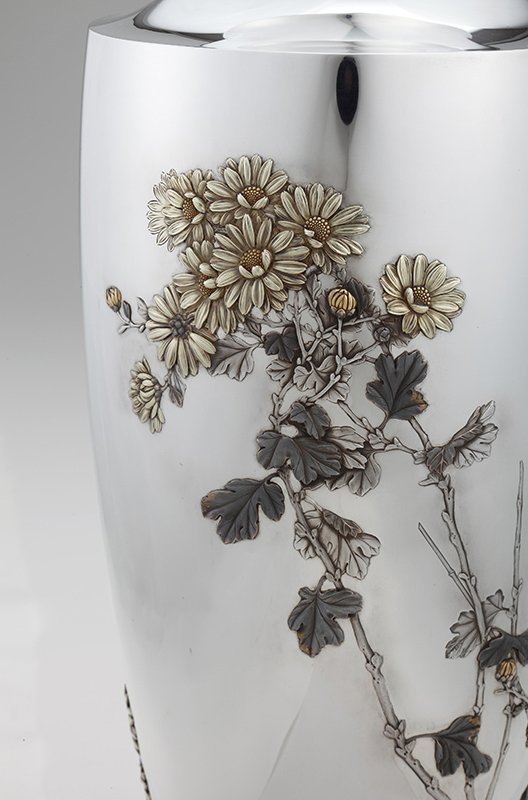MEIJI-TAISHO
SATO ISSHU, PAIR OF 1918 INLAID SILVER VASES WITH HIBISCUS & CHRYSANTHEMUM
Pair of vases in baluster form, the left-hand vase ornamented in high relief with flowering hibiscus and the right-hand one with flowering chrysanthemum. Of uchidashi or hammered silver, cold-chiseled and decorated in both high relief and flush inlays with carved shibuichi in two colors, two colors of gold, silver. Each signed with a carved signature: Ishhu Koku or Carved by Isshu, and inlaid with a gold seal. Each base stamped on the base in seal form: Jun Gin or Pure Silver, and: Miyamoto Kinsei or Finely Made by Miyamoto. Sato Isshu (1885 – 1925) working for the commissioning house Miyamoto Shokai. With the original carved, pierce-work rosewood stands. Taisho 7 or 1918.
With the original, period storage box of paulownia wood with inlaid rosewood handles, inscribed on the exterior of the box lid: Ginsei Kabin, Ittsui or Silver Vases, A Pair; and on the reverse of the lid: Taisho Nana-nen Junigatsu or Taisho (era), 7th Year (1918), December, and: Watanabe Shi or Owned by Watanabe, and with the original paper label printed in both Japanese and English for Miyamoto Shoko, Ginza, Tokyo. With the original white silk wrapping cloths.
Miyamoto Shoko was a high-level commissioning house in Tokyo, noted as well for its patronage by the Imperial Household Agency.
Sato Isshu (1885 – 1925) from the age of eleven studied under Ikkan, the 7th generation master of the Iwamoto School of tsuba and sword fitting makers. Later he worked under Osaki Kazuyoshi, a pupil of Ishiguro Masayoshi. The Imperial Household Agency commissioned work from him for presentation pieces, and the both the shapes of these vases as well as the white silk bags certainly echo other presentation pieces. For another example of Sato Isshu’s work, c.f. Japanese Imperial Craftsmen: Meiji Art from the Khalili Collection, number 25, pages 50 – 51 for an incense burner ornamented with cockerels.
These vases display extraordinary workmanship in metal carving, chiseling and inlay techniques. The design motifs play off high relief and in the blossoms and leaves with flush effects to intensify the painterly sense of realism. The artist wraps petals around the stamens on the chrysanthemum blossoms, varying the stages of opening from bud to blossom. Countering the delicacy of the chrysanthemums on the one vase, a cascade of pointed silvery-toned leaves and tight gold blossoms point up the hibiscus flower curling at the end of its stem on the other.
Sato Isshu, Pair of 1918 Inlaid Silver Vases with Hibiscus & Chrysanthemum
Artist Name: Sato Isshu
Period: Meiji Taisho
Mediums: Metalwork
Form: Vase
Origin Country: Japan
13 1/8” high x 6 1/8” diameter, dimensions of each vase alone without stands
This piece is no longer available.







